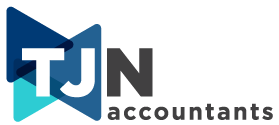How can I get my accounts paid faster?
We all know that cash is king, especially for small businesses, but how can you improve the cash collection for your accounts receivable (debtors)?
The faster you are paid by your debtors, the faster you can put that money to work for you and your business – so quick debt collection is imperative for a strong business. You also don’t want to be left with a debtor who suddenly goes out of business and can no longer pay your account.
Here are some tips for you to improve the collection of your debtors:
- Invoice promptly after providing the goods / services – where your customer can see the connection between the invoice and the value they have received, they are more likely to pay promptly;
- Have clear payment terms – have these stated on your invoice together with the consequences for late or missed payments;
- Offer payment options and terms – the easier it is for customers to pay, the more likely they are to pay quickly (most online accounting software packages provide options for you to take payment by credit card with the associated cost being passed on to your customer);
- Promptly follow up overdue accounts – keep up-to-date records of your debtors and make sure you promptly follow up on overdue balances (this can be done automatically with most online accounting software);
- Maintain good customer relationships – building strong relationships with your customers improves your chances of collecting the debt;
- Consider hiring a collection agency – if you have exhausted all other options and are struggling to collect your debt, consider hiring a debt collection agency to assist you.
Not all businesses are suited for providing goods/services on account – you need to consider whether it is appropriate for your business.
Most accounting software packages give you data regarding your debtors. You should review this information on a regular basis. For example, your software should be able to show you:
- Your current outstanding debtors and the length of time they have been outstanding.
- The number of days (on average) it takes you to collect your debtors.
- The amount of your debtors compared to your total sales.
- The average amount of your debtors over time.
If you find you are making a lot of sales but your cashflow is struggling, it may be because your cash collection is low and you have many outstanding debtors.
We can help you to review the state of your current debtors, as well as provide you with recommendations on how to improve your cash collection from outstanding accounts. Feel free to book in a time with us to discuss.
DISCLAIMER: The information in this article is general in nature and is not a substitute for professional advice. Accordingly, neither TJN Accountants nor any member or employee of TJN Accountants accepts any responsibility for any loss, however caused, as a result of reliance on this general information. We recommend that our formal advice be sought before acting in any of the areas. The article is issued as a helpful guide to clients and for their private information. Therefore it should be regarded as confidential and not be made available to any person without our consent.

Jeanette has over 20 years experience as an accountant in public practice. She is a Chartered Accountant, registered tax agent and accredited SMSF Association advisor. When she is not helping business owners grow their empires, you will likely find her out running on the trails or at the gym. Book in to see Jeanette today.








